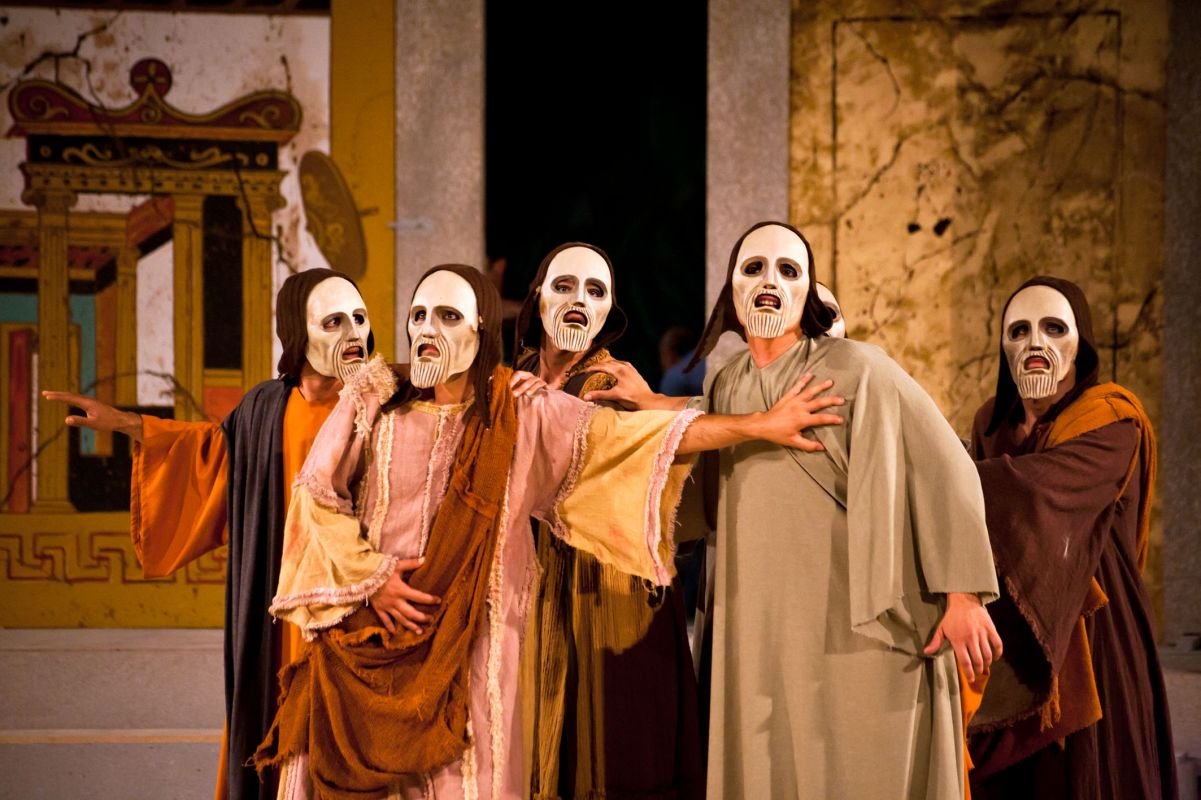
Ancient Greek Costumes, Masks And Theatre In Focus
Three well-known Greek tragedy playwrights of the fifth century are Sophocles, Euripides, and Aeschylus. Ancient Greek masks and costumes The Greek actors soon dressed in costume, and all wore masks expressing the various emotions they wished to represent.
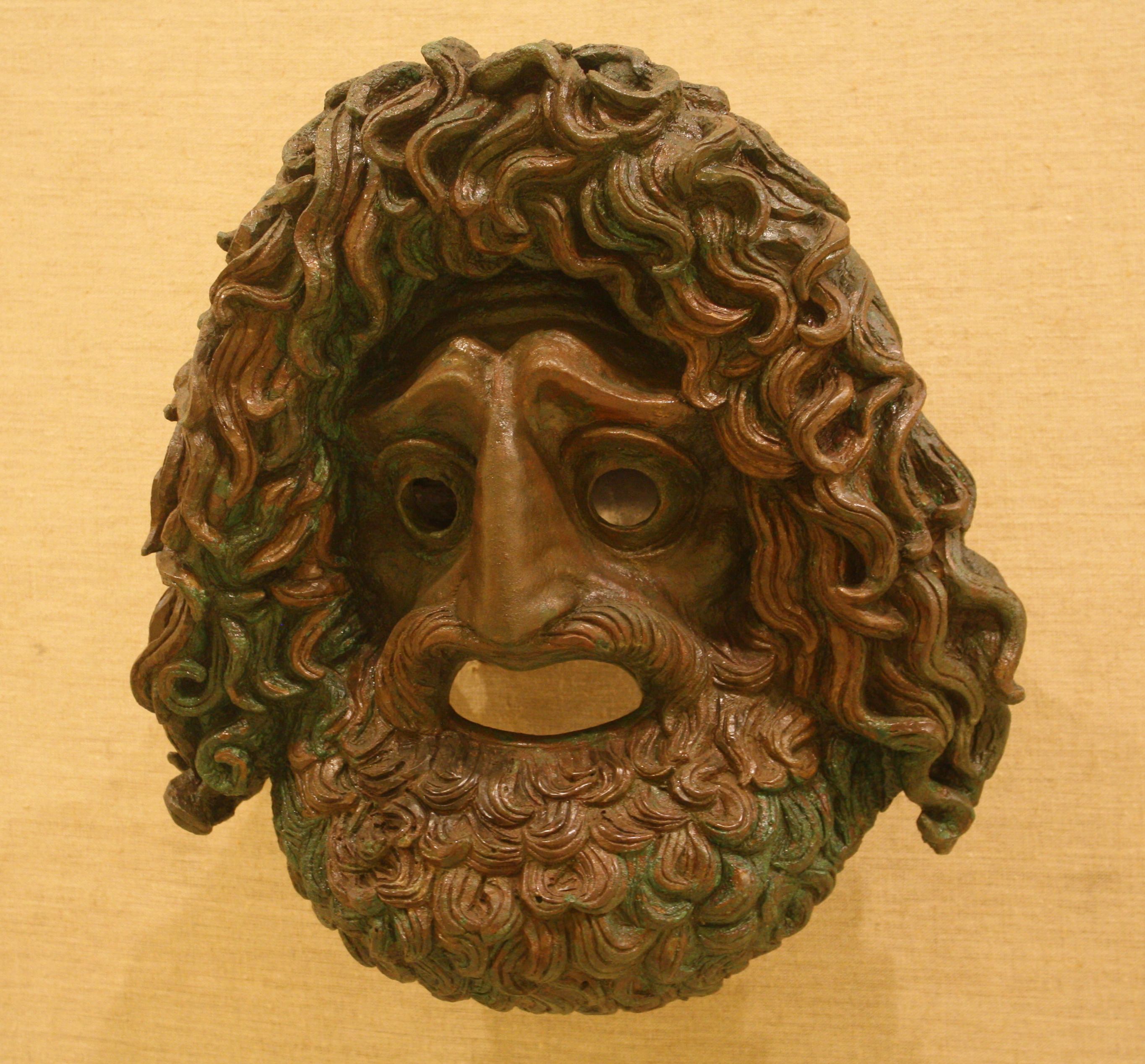
Greek Tragedy Theatre Mask (Illustration) Ancient History Encyclopedia
1 week. Driving question How and why were masks used in ancient Greek theatre? Content This lesson sequence provides an introduction to, and practical exploration of, masked performance in the context of Greek theatre. Masks were used to amplify characters and emotions and enabled performers to move between characters with ease.
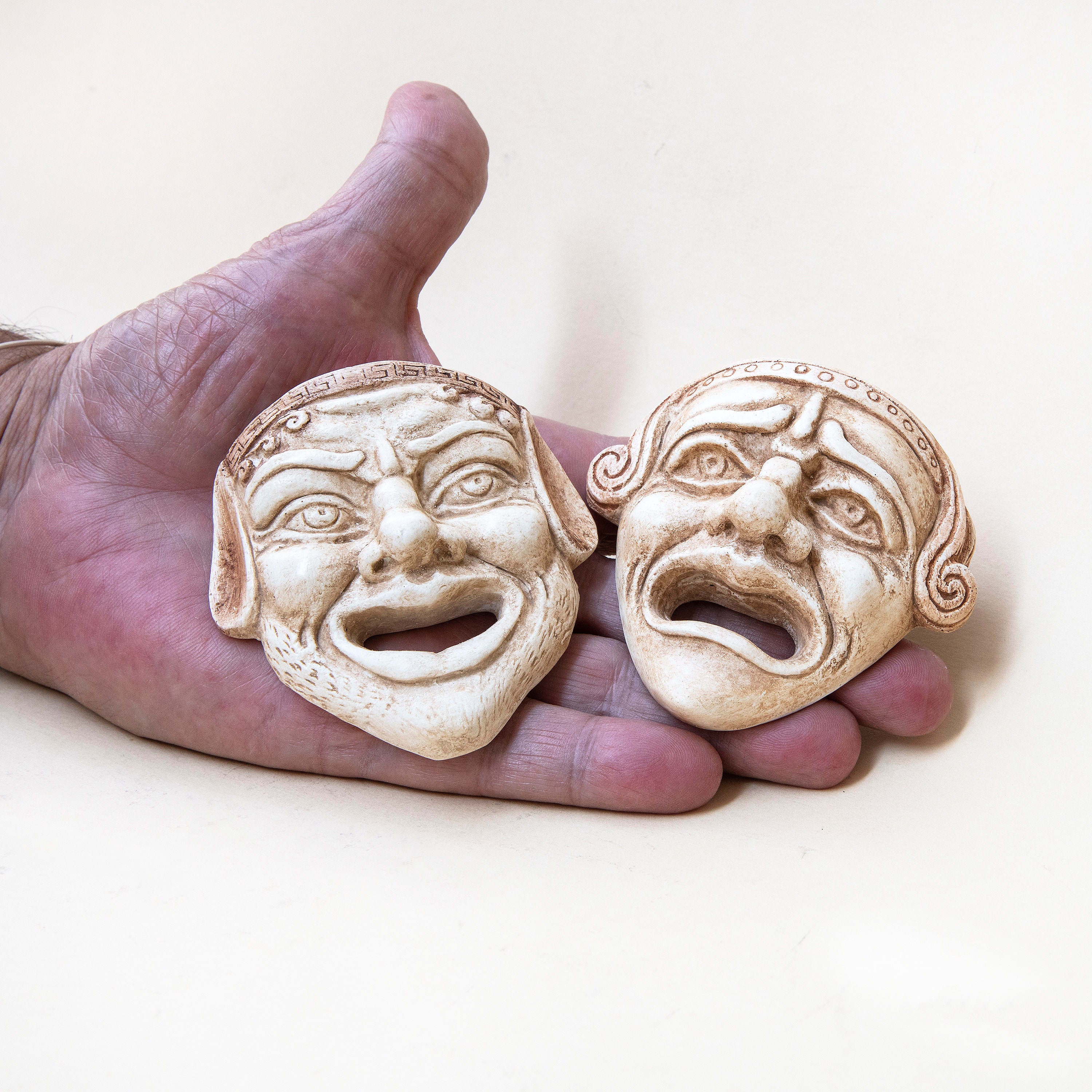
Ancient Greek Drama Theater Masks, Set of 2 Comedy/Tragedy Actors Masks
Dramatic genres The first time theatre truly freed itself from religious ritual to become an art form was in Greece in the 6th century bce when the dithyramb was developed. This was a form of choral song chanted at festivals in honour of Dionysus, the god of wine, fruitfulness, and vegetation.
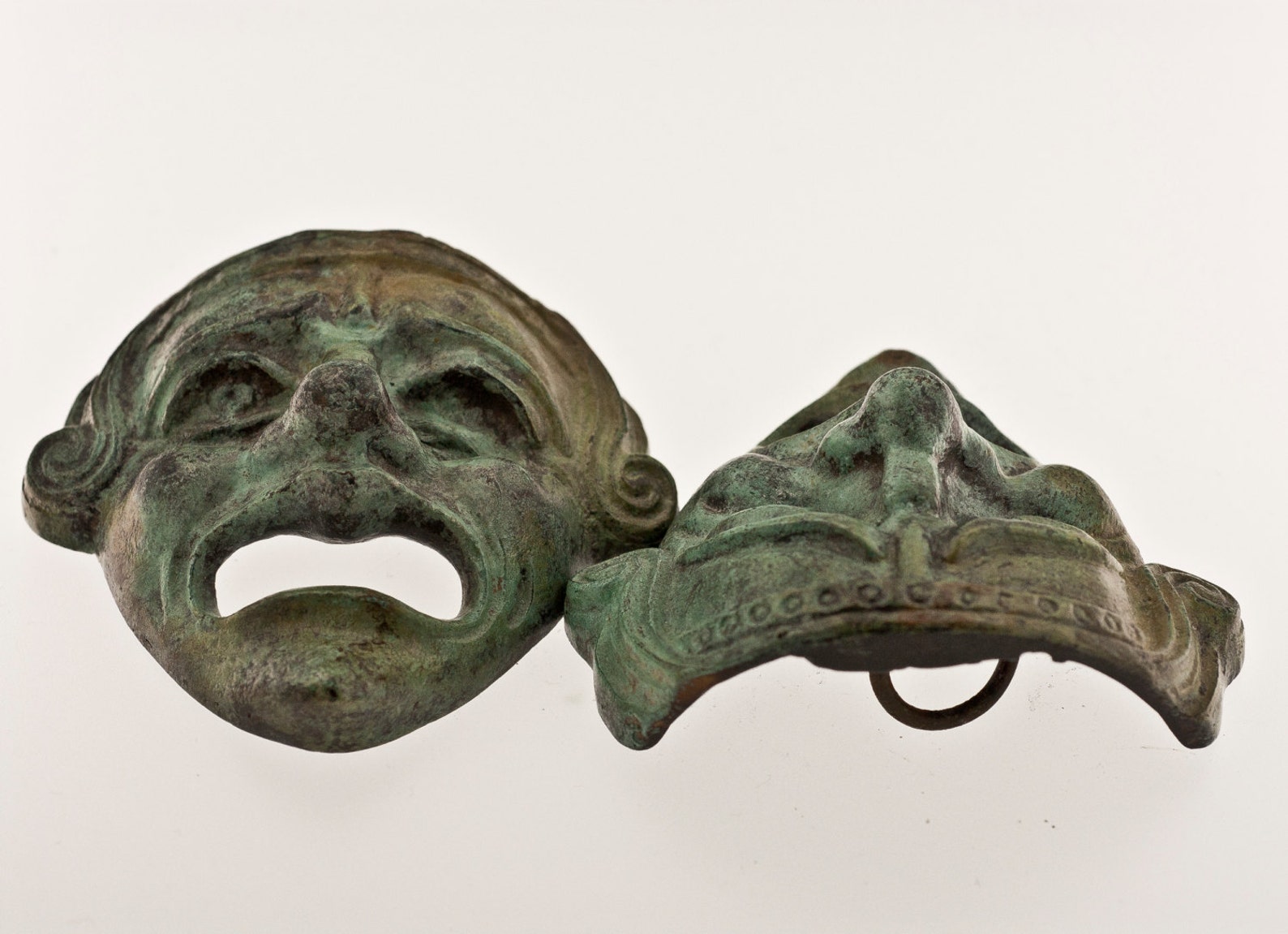
Bronze Greek Theatre Mask Ancient Greek Drama Actors Mask Etsy
The word τραγῳδία, tragoidia, from which the word "tragedy" is derived, is a compound of two Greek words: τράγος, tragos or "goat" and ᾠδή, ode meaning "song", from ἀείδειν, aeidein, 'to sing'. [1] This etymology indicates a link with the practices of the ancient Dionysian cults.

Greek theatre mask Greek drama masks, Theatre masks, Drama masks
In modern revivals of ancient Greek plays, masks have occasionally been employed, and such highly symbolic plays as Die versunkene Glocke ( The Sunken Bell; 1897) by German writer Gerhart Hauptmann (1862-1946) and dramatizations of Alice in Wonderland have required masks for the performers of grotesque or animal figures.
.jpg)
A GREEK TERRACOTTA THEATRE MASK , HELLENISTIC PERIOD, CIRCA 3RD2ND
Cartwright, Mark. " Theatre Masks ." World History Encyclopedia. World History Encyclopedia, 24 Jun 2013. Web. 16 Dec 2023. A marble relief depicting theatre masks as worn by actors in both Greek and Roman tragedies and comedies. 2nd century CE (Vatican Museums, Rome).

Greek Theatre Masks Baker Ross
It was common practice for Greek actors to use masks. These theatre masks were thought to amplify the actor's voice and contribute to the theatrical ambiance. They have since become icons of the ancient Greek culture and sought after collectors' items. Highly decorated masks were worn during feasts and celebrations as well as during funeral.

Greek masks Ancient greek costumes, Ancient greek theatre, Theatre masks
Greek theatre likely sprang from the lyrical performance of ancient epic poetry and the rituals performed in the worship of the god Dionysos where goats were sacrificed and participants wore masks. From the 6th century BCE, Greek tragedy plays were performed in open-air theatres at religious festivals and this format would lead to the new genre of Greek comedy plays.

5 Greek Chorus masks Hand painted Tough and lightweight Made of high
Greek theatre masks were made of stiffened and painted linen so none have survived to the present day. We only know what they looked like because theatre was so popular in Greek and Roman times that models of actors and masks were made in other materials such as terracotta, stone and bronze and depicted on gems and in paintings and mosaics.

Masks covered the whole head with holes for the eyes and mouth and were
The sock and buskin are two ancient symbols of comedy and tragedy. In ancient Greek theatre, actors in tragic roles wore a boot called a buskin (Latin cothurnus ). The actors with comedic roles wore only a thin-soled shoe called a sock (Latin soccus ). Melpomene, the muse of tragedy, is often depicted holding the tragic mask and wearing buskins.

BRASS ANCIENT GREEK COMEDY & TRAGEDY DRAMA MASKS THEATRICAL WALL
The use of masks in ancient Greek theater draw their origin from the ancient Dionysian cult. Thespis was the first writer, who used a mask. The members of the chorus wore masks, usually similar to each other but completely different from the leading actors. Picture 1 portrays a sort of mask suitable for the chorus.
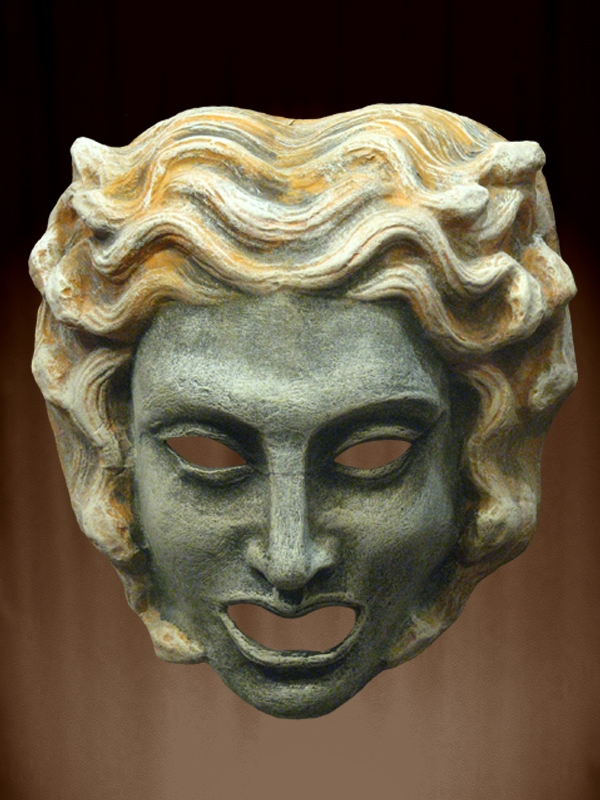
MYTHOLOGICAL MASK OF the GREEK THEATER OF MEDUSA OR
A terracotta mask of the Greek wine god Dionysus, likely dating to the late 4th century B.C., was recently discovered on the acropolis of the ancient city of Daskyleion in western Turkey. https://t.co/tPIZ2C5TF4 pic.twitter.com/hWmrNf4TsS — Archaeology Magazine (@archaeologymag) January 30, 2021

pentheus mask Google Search Ancient greek theatre, Greek chorus
The tragedy mask is known as Melpomene, who according to Greek mythology is the Muse of Tragedy. Melpomene is depicted with the tragedy mask in one hand, and a knife or a club in the other. Actors represent Melpomene through an elevated stature on stage by wearing thick, raised boots. Melpomene too, is the daughter of Zeus and Mnemosyne, and.
.jpg)
FileAncient Greek theatrical mask of Zeus, replica (8380375983).jpg
Although the words come from Greek drama, it's a modern invention to use them as names for the theater masks — the ancient Greeks and Romans did not start the trend. Thalia and Melpomene The names Thalia and Melpomene are references to two of the Greek Muses, the deities who were the source of inspiration for artists and musicians.

Oedipus Rex Mask
MLA Style. Cartwright, Mark. " Greek Tragedy Theatre Mask ." World History Encyclopedia. World History Encyclopedia, 08 Mar 2015. Web. 07 Jan 2024. A votive offering in a the form of a larger-than-life bronze tragedy theatre mask. Possibly by Silanion, 4th century BCE. (Archaeological Museum of Piraeus)
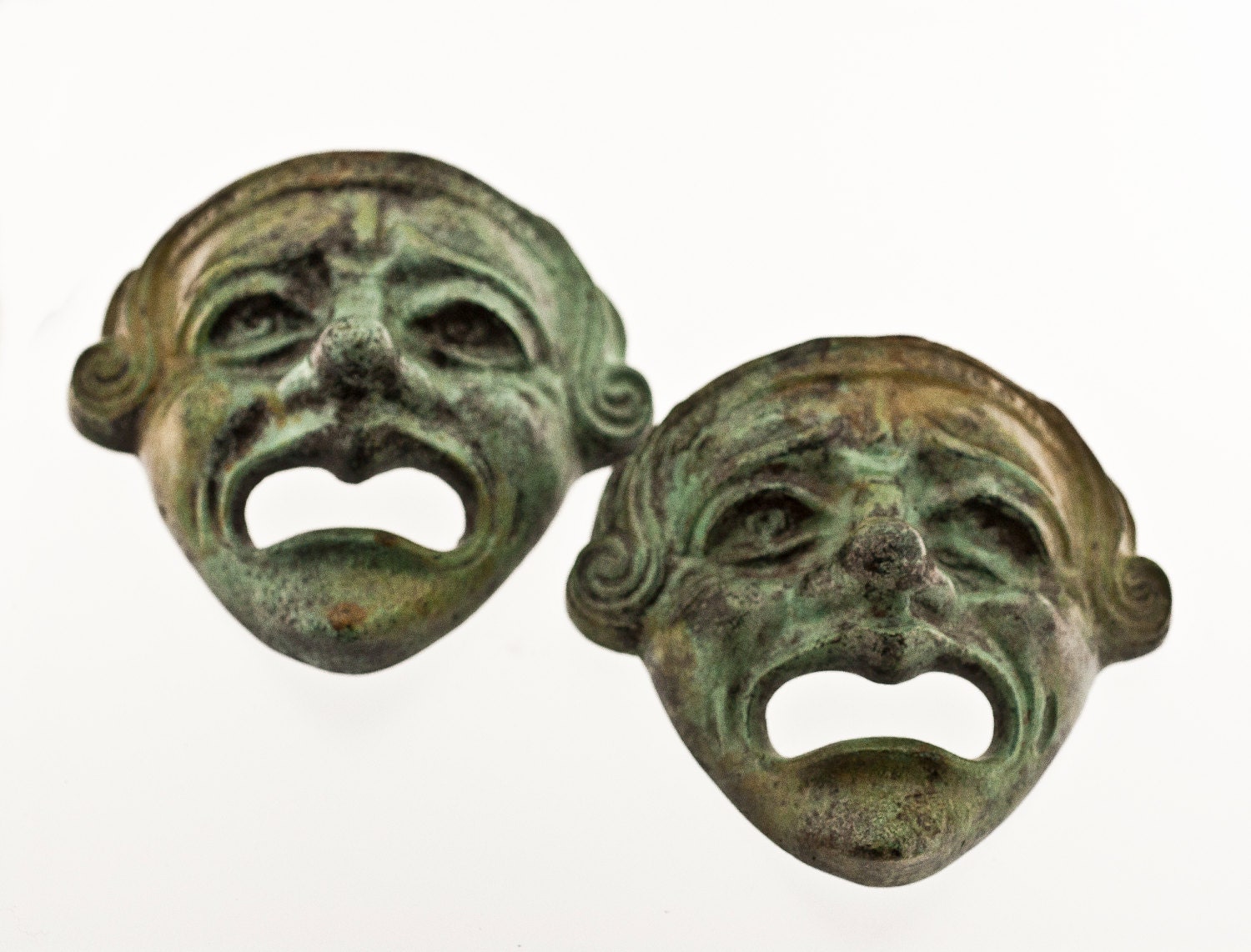
Theatre Actors Tragedy Mask of Ancient Greek Drama
The traditional full attire of Greek theater actor consisted of chiton (turnic or robe), chlamys (short cloak), chlaina (overgarment), kothurnus (short lace-up boots), himation (overgarment), peplos (cloak) and prosopon (mask, translated from Greek as "face").